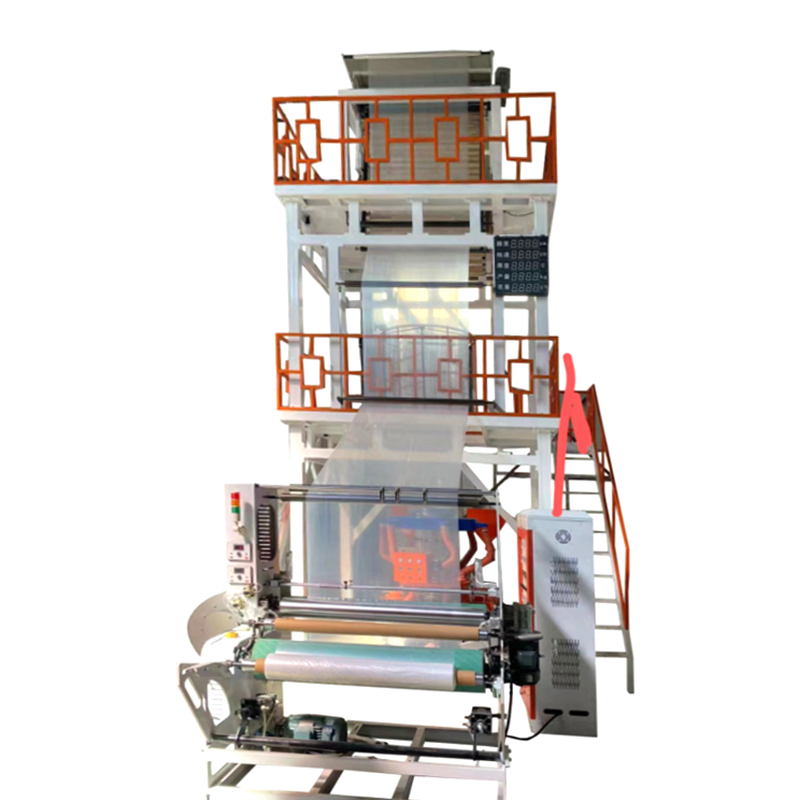Blown Film Machine: Can Beginners Operate It Safely?
 By Admin
By Admin
Stepping onto a blown-film extrusion floor for the time can feel like entering a steel-and-hum symphony: motors drone, air rings hiss, and a shimmering plastic bubble climbs toward the rafters. The immediate question every newcomer asks is simple: can beginners operate a blown film machine safely? The short answer is yes—if the line is properly engineered, the training is systematic, and the safety culture is stronger than the resin itself.
Modern blown film lines now ship with three layers of built-in protection designed for operators who may never have touched an extruder before. To begin with, the human-machine interface (HMI) has migrated from cryptic keypads to icon-driven touchscreens that mirror smartphone logic. Instead of deciphering parameter codes, a novice simply selects a recipe—say “20-µm grocery bag”—and the PLC populates temperatures, screw speed, air flow, and haul-off rate automatically. If the operator accidentally types 300 °C instead of 200 °C for the die zone, the software flags the deviation and refuses to proceed until a supervisor PIN is entered.
Second, guard interlocks have evolved far beyond hinged switches. Light curtains now surround the collapsing frame; any intrusion instantly halts the nip rolls and vents bubble pressure through fail-safe valves. Emergency-stop buttons follow the operator wirelessly via a Bluetooth pendant clipped to every smock. Even the bubble cage is motorized: instead of requiring physical adjustment with wrenches, a joystick raises or lowers the calibration ring at 5 mm increments, keeping hands clear of pinch points.

Third, resin handling has been redesigned for little dust and zero back strain. Vacuum loaders convey pellets directly from gaylords to the hopper, eliminating the need to climb ladders with 25 kg bags. Integrated desiccant dryers run only when humidity sensors detect a threshold, preventing thermal burns from overheated resin.
Yet hardware alone cannot eliminate risk. many accidents still trace back to shortcuts—bypassing lock-out/tag-out to clear a die lip, or tasting compressed air to check pressure (yes, it happens). That is why suppliers bundle every sale with a structured training ladder. Day one covers PPE, lock-out procedures, and the location of eyewash stations. Day two moves to virtual reality: trainees don headsets and rehearse bubble startup in a simulated environment where scrap rates cost nothing but pride. Only on day three do they touch real resin, guided by an instructor whose own certification expires every twelve months unless renewed by a rigorous audit.
Even after certification, the learning curve stays shallow thanks to remote diagnostics. Cloud-connected lines stream temperature, pressure, and motor-current data to the supplier’s service center. When a beginner sees the bubble waver, an app suggests corrective steps ranked by likelihood: “Air ring ±2 mm” appears in green, while “Check for melt fracture” is amber. If the operator hesitates, a video clip auto-plays on the HMI showing exactly which knob to turn. Within six months, many novices achieve scrap rates below 2 %—a figure once reserved for seasoned technicians.
Finally, the culture question. A plant that tolerates “cowboy” shortcuts will defeat any safeguard, but a facility that celebrates near-miss reporting creates a feedback loop where beginners rapidly become mentors. One Midwest converter posts weekly “bubble blooper” photos—always anonymous, always instructive. Over two years, recordable injuries dropped from six to zero, while productivity rose 14 %.
So, can beginners operate a blown film machine safely? Absolutely—provided the machine is designed for intuition, the training is immersive, and the culture prizes vigilance over velocity. When those three pillars align, a-time operator can go from bubble anxiety to bubble mastery without ever trading safety for throughput.




